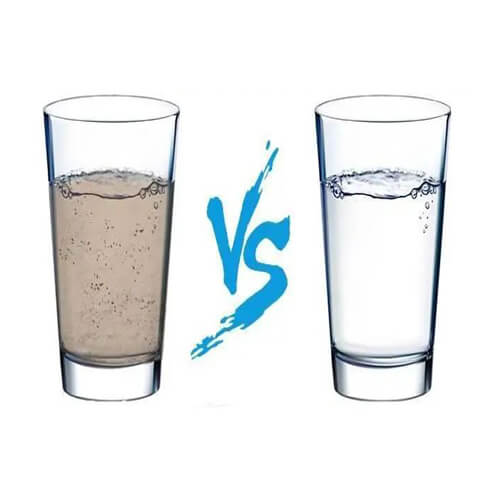Types of environmental monitoring
Environmental monitoring is a process of systematically testing and evaluating various environmental factors, aiming to evaluate environmental quality, pollution level and changing trends, and provide a scientific basis for environmental management and decision-making. According to different classification standards, environmental monitoring can be divided into many types.
Division by region
Plant monitoring: mainly refers to the monitoring of internal pollution sources and total emission outlets by enterprises and institutions. The monitoring stations set up by each unit are mainly engaged in this part of the work.
Regional monitoring: refers to the monitoring of urban water bodies, atmosphere, sea areas, river basins, scenic areas and tourist areas by environmental protection departments across the country or a certain region.
Division by nature
Surveillance monitoring: According to the pee-arranged network points, it takes a long time to collect data for monitoring, which is mainly used to grasp the status and changing trends of environmental quality.
Research monitoring: Through monitoring, understand the pollution mechanism, clarify the migration and change laws of pollutants, and study the degree of environmental pollution.
Specific purpose monitoring: Monitor specific environmental problems or pollution sources to evaluate and control their impact on the environment, such as offshore oil tanker pollution accidents and pollution incidents caused by factory production failures.
Classification by object
Atmospheric monitoring: monitor the concentration of pollutants such as particulate matter, sulfur dioxide, nitrogen oxides, ozone, volatile organic compounds, etc. in the air.
Water quality monitoring: monitor the concentration of various pollutants in the water, including harmful substances, heavy metals, sources of pollutants, organic matter, etc.
Noise monitoring: monitor the intensity, frequency, duration and other information of noise to ensure noise control within various regulations and standards.
Soil monitoring: monitor various harmful pollutants in the soil to improve the utilization value of land resources.
Electromagnetic radiation monitoring: monitor the intensity of the radiation field to ensure that the radiation field will not cause harm to the human body and the natural environment.
Meteorological environment monitoring: monitor various meteorological parameters, such as temperature, wind speed, humidity, etc., to provide accurate meteorological data and related warnings.
Other categories
Environmental quality monitoring: monitor conventional indicators in the environment to grasp the status and changing trends of environmental quality.
Pollution source monitoring: monitor specific pollution sources to evaluate and control their impact on the environment.
The above are the main types of environmental monitoring. Each type of monitoring has its specific purpose and methods, which together constitute a comprehensive environmental monitoring system.
https://www.renkeer.com/environmental-monitoring-types-and-systems/
Types of environmental monitoring
Environmental monitoring is a process of systematically testing and evaluating various environmental factors, aiming to evaluate environmental quality, pollution level and changing trends, and provide a scientific basis for environmental management and decision-making. According to different classification standards, environmental monitoring can be divided into many types.
Division by region
Plant monitoring: mainly refers to the monitoring of internal pollution sources and total emission outlets by enterprises and institutions. The monitoring stations set up by each unit are mainly engaged in this part of the work.
Regional monitoring: refers to the monitoring of urban water bodies, atmosphere, sea areas, river basins, scenic areas and tourist areas by environmental protection departments across the country or a certain region.
Division by nature
Surveillance monitoring: According to the pee-arranged network points, it takes a long time to collect data for monitoring, which is mainly used to grasp the status and changing trends of environmental quality.
Research monitoring: Through monitoring, understand the pollution mechanism, clarify the migration and change laws of pollutants, and study the degree of environmental pollution.
Specific purpose monitoring: Monitor specific environmental problems or pollution sources to evaluate and control their impact on the environment, such as offshore oil tanker pollution accidents and pollution incidents caused by factory production failures.
Classification by object
Atmospheric monitoring: monitor the concentration of pollutants such as particulate matter, sulfur dioxide, nitrogen oxides, ozone, volatile organic compounds, etc. in the air.
Water quality monitoring: monitor the concentration of various pollutants in the water, including harmful substances, heavy metals, sources of pollutants, organic matter, etc.
Noise monitoring: monitor the intensity, frequency, duration and other information of noise to ensure noise control within various regulations and standards.
Soil monitoring: monitor various harmful pollutants in the soil to improve the utilization value of land resources.
Electromagnetic radiation monitoring: monitor the intensity of the radiation field to ensure that the radiation field will not cause harm to the human body and the natural environment.
Meteorological environment monitoring: monitor various meteorological parameters, such as temperature, wind speed, humidity, etc., to provide accurate meteorological data and related warnings.
Other categories
Environmental quality monitoring: monitor conventional indicators in the environment to grasp the status and changing trends of environmental quality.
Pollution source monitoring: monitor specific pollution sources to evaluate and control their impact on the environment.
The above are the main types of environmental monitoring. Each type of monitoring has its specific purpose and methods, which together constitute a comprehensive environmental monitoring system.
https://www.renkeer.com/environmental-monitoring-types-and-systems/




